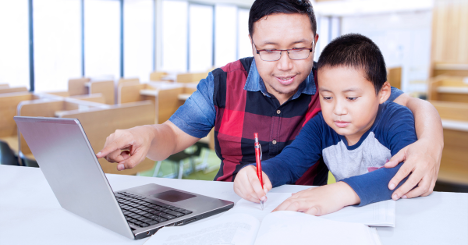Guiding Students to Harness Mistakes for Learning: 5 Powerful Strategies

Harness Mistakes for Learning
Harness Mistakes for Learning
Harness Mistakes for Learning
The Importance of Embracing Mistakes in Education
Embracing mistakes as a natural part of the learning process is crucial for developing a growth mindset in students. According to educational psychologist Carol Dweck, a growth mindset is the belief that abilities can be developed through dedication and hard work. This mindset fosters resilience, a love for learning, and the willingness to tackle challenges.
Table 1: Fixed Mindset vs. Growth Mindset
| Fixed Mindset | Growth Mindset |
|---|---|
| Avoids challenges | Embraces challenges |
| Gives up easily | Persists in the face of setbacks |
| Sees effort as fruitless | Sees effort as a path to mastery |
| Ignores useful negative feedback | Learns from criticism |
| Feels threatened by others’ success | Finds inspiration in others’ success |
Strategy 1: Creating a Safe Learning Environment
Why Safety Matters
Creating a classroom environment where students feel safe to make mistakes is the first step in guiding them to harness these mistakes for learning. A safe learning environment encourages students to take risks and experiment without the fear of ridicule or harsh consequences.
Practical Steps
1. Establish Clear Expectations: Set classroom norms that celebrate effort and learning from mistakes. Use positive reinforcement to encourage students who take risks and learn from errors.
2. Model Mistake-Making: Teachers should model making and correcting mistakes to demonstrate that errors are a natural part of the learning process.
3. Encourage Peer Support: Foster a collaborative atmosphere where students support each other’s learning journeys, providing constructive feedback and encouragement.

Strategy 2: Reflective Practices
The Power of Reflection
Reflection is a critical component of learning from mistakes. It allows students to analyze what went wrong, understand the underlying concepts, and develop strategies for improvement.
Implementing Reflection
- Journaling: Encourage students to keep learning journals where they can write about their mistakes, what they learned, and how they plan to approach similar problems in the future.
- Think-Pair-Share: Use this cooperative learning strategy to promote reflection. Students think about a mistake, discuss it with a partner, and then share with the class, fostering a deeper understanding through dialogue.
- Self-Assessment: Teach students to assess their own work critically. Provide rubrics that guide them in identifying areas of improvement and planning steps for progress.
Strategy 3: Feedback That Fosters Growth
Constructive Feedback
Providing constructive feedback is essential in guiding students to harness mistakes for learning. Effective feedback focuses on the process rather than the person, highlighting areas for improvement and strategies for success.
Feedback Techniques
- Specific and Actionable: Offer specific, actionable feedback that students can use to improve their performance. Avoid vague comments that do not provide clear guidance.
- Positive Framing: Frame feedback positively to motivate students. Highlight what they did well before addressing areas for improvement.
- Regular Check-Ins: Schedule regular feedback sessions to discuss progress, set goals, and adjust learning strategies as needed.
Strategy 4: Integrating Mistake Analysis into Curriculum
Curriculum Design
Integrating mistake analysis into the curriculum ensures that students view errors as integral to the learning process. This approach requires thoughtful planning and a shift in teaching methods.
Curriculum Integration Methods
- Error Analysis Exercises: Incorporate exercises that require students to identify, analyze, and correct errors in given problems or their own work.
- Case Studies: Use case studies of historical or scientific mistakes to illustrate how errors can lead to significant discoveries and advancements.
- Group Projects: Design group projects that include stages of planning, execution, and review, with a focus on identifying and learning from mistakes.
Strategy 5: Promoting a Growth Mindset
Growth Mindset Development
Promoting a growth mindset in students encourages them to view mistakes as opportunities to grow rather than as failures. This mindset is cultivated through deliberate practice and reinforcement.
Cultivation Techniques
- Mindset Workshops: Conduct workshops that teach the principles of a growth mindset, including the value of effort, persistence, and learning from mistakes.
- Goal Setting: Help students set realistic, achievable goals and track their progress. Celebrate milestones and reflect on challenges encountered along the way.
- Praise Effort, Not Intelligence: Focus on praising students for their effort and persistence rather than their innate abilities. This reinforces the idea that abilities can be developed through hard work.

FAQs
Q1: How can teachers create a classroom environment where mistakes are valued?
Teachers can create such an environment by establishing clear expectations, modeling mistake-making, and fostering peer support. It’s important to celebrate effort and encourage students to view mistakes as learning opportunities.
Q2: What are some effective ways to provide feedback that fosters growth?
Effective feedback should be specific, actionable, and positively framed. Regular check-ins to discuss progress and set goals can also help students stay motivated and focused on improvement.
Q3: How can reflective practices be incorporated into daily classroom activities?
Reflective practices can be incorporated through journaling, think-pair-share activities, and self-assessment exercises. These methods encourage students to analyze their mistakes and plan for future improvement.
Q4: Why is promoting a growth mindset important in education?
Promoting a growth mindset is important because it helps students view challenges and mistakes as opportunities for growth. This mindset fosters resilience, persistence, and a love for learning, which are essential for long-term success.
Q5: Can mistake analysis be integrated into any subject?
Yes, mistake analysis can be integrated into any subject. For example, in math, students can analyze errors in problem-solving steps; in history, they can study the consequences of historical decisions; and in science, they can explore experimental errors and their implications.
Conclusion
Guiding students to harness mistakes for learning is a transformative approach that can significantly enhance their educational experience. By creating a safe learning environment, incorporating reflective practices, providing constructive feedback, integrating mistake analysis into the curriculum, and promoting a growth mindset, educators can help students turn errors into valuable learning opportunities. This approach not only improves academic performance but also builds essential life skills such as resilience, critical thinking, and a love for continuous learning.
[bdp_post_carousel show_tags=”false” show_comments=”false” show_category=”false” dots=”false” limit=”10″ orderby=”rand” _builder_version=”3.0.47″][/bdp_post_carousel]
You can signup for free
